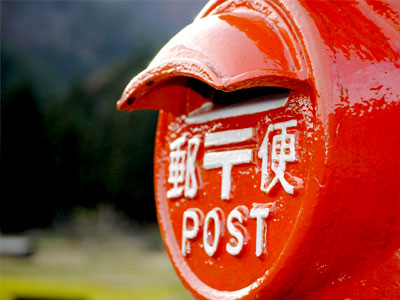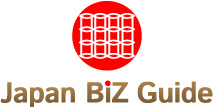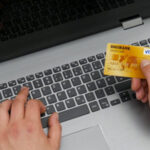In spite of its reputation as a hi-tech powerhouse, Japan is a country that forgoes emoney in favour of good-old-fashioned cash payments. First-time visitors are often shocked to learn that it's perfectly normal for Japanese natives to carry around a few ¥10,000 notes in their pockets—a habit that poses very little risk in one of the safest countries in the world. Credit cards, on the other hand, are only accepted in a limited number of stores, restaurants and hotels in the big cities and attract transaction fees whenever they're used.
It is highly recommended that travellers and expats learn to "do as the roman's do" on this one—you will just have to get used to the idea of purchasing large items in cash, paying for bills at the convenience store or your online shopping by COD.
Use the Topics side menu on the left to find out more.
Debit & Credit Cards
Japanese Cards
Domestically-issued credit cards (i.e. those issued by Japanese banks) can be used without problems as long as the facility takes credit card payments. However, expats should bare in mind that the number of places that do this is nowhere near as widespread as in western countries, so it is a good idea to carry around enough cash with you to get you through your day, just in case. Smaller restaurants, hotels and shopping store chains in particular are unlikely to accept card payments, particularly if outside a major city. It's a good idea to stick to large hotel chains and department stores if you're a credit-card-spending fiend.
Using Foreign Cards
Outside the large hotel chains, foreign-issued credit and debit cards are almost never accepted and the further you are away from the biggest cities, the less likely you are going to be able to pay with foreign cards. To avoid any potential problems, tourists should either bring enough cash with them for their stay or enough until they can locate an ATM that will allow them to make international cash withdrawals (see ATMs section below).
Note: Make sure to notify your bank before travelling abroad or your card may be blocked when you try to withdraw money.
Cheques
Cheques (US: checks) are not used in Japan so cannot easily be cashed at Japanese banks, if at all.
The only exception to this are traveller's cheques, but you may find yourself using up valuable holiday time waiting at the bank for these to be processed. It may be easier for travellers to just bring cash with them instead since Japan is a safe country anyway.
ATMs

Location
ATMs in Japan are found indoors rather than on an external wall. They're located in banks, in many post offices, almost all convenience stores (konbini) and in department stores.
Features
Japanese ATMs offer a variety of services which differ depending on the ATM you are using. All ATMs obviously dispense cash and allow you to update your bank book, but some also allow you to deposit money or pay bank transfers (see below). These machines can be found in banks or post-offices which have an attached bank section.
Operating Hours
One would probably assume that ATMs would be open 24 hours in a cash-based society, but this isn't the case for Japan. Despite the nation's heavy reliance on cash, they actually have relatively limited operating hours.
Postal ATMs vary greatly, depending on the site of the branch. Small, local branches will cease operation in the afternoon, whereas central branches (e.g. Tokyo Central) may be operational until the evening.
Bank ATMs can have limited accessibility as they often close the same time as the branch in the afternoon. However, depending on the branch, some do stay open until the evening even after the branch is closed down.
Convenience store ATMs are usually shut down between 19:00-21:00, but this would vary depending on the size and location of the branch.
Many postal and bank ATMs are completely non-operational on Sundays and Bank Holidays, and ATMs in smaller branches may even be closed on Saturdays. Convenience store ATMs are usually open all weekend.
International ATMs
Foreign cards can only be used in international ATMs such as those found in international airports, 7-Eleven convenience stores, Japan Post branches or in Shinsei Bank branches. These ATMs will often have multi-language options available. International transactions will attract a transaction fee as well as those issued by your bank.
Bank Transfers via ATM
Electronic bank transfers (known as 'furikomi' in Japanese) are a fast and efficient way to pay for things ranging from deposits, bills or even remitting money abroad. This function doesn't usually have instructions in English, but when you've done it a couple of times it isn't that hard to do. Bank transfers will incur a transfer fee which varies by bank, often a few hundred yen.
Once you have your recipient's details, select the 'furikomi' button on the ATM panel (must be an ATM at a bank). The machine will ask you for their details, such as their name and account number. The ATM will ask you if you want to 'register' them on there, which means you will not have to re-enter their bank details again if you need to make another payment to them in the future. After you input the transfer amount and confirm the transaction on the confirmation screen, the process is finished. The money will be transferred that day if it is before the cut-off time (around 15:00 for many places) or the next day if after this time.
Banks
Banks in Japan are much the same as banks in other countries and offer the usual range of services. If you are living in Japan you can open up a Japanese bank account after you get your residence card. You will later receive your ATM card ('cash card') and bank book through the post when your application has been processed. Bank books can be used in place of the cash card at ATMs and your balance will automatically get updated when you use them.
Business Hours
Business hours are Monday-Friday 9 to 3pm, while ATMs close a bit later (depending on the branch - some close at 5pm while others close at 7 or 8pm). Banks are also closed on national holidays.
Over the Counter Services
You are able to do all of the basic banking procedures at Japanese banks, such as paying bills & taxes, withdrawing & depositing cash and doing bank transfers; however, their limited opening hours makes it much more efficient to do these elsewhere. You will often have to face long waiting times even for these simple services and, when you do eventually get to use them, they often take a long time to process anything as several members of staff may need to OK any documents or forms that you submit.
For this reason, it is a good idea to do these services elsewhere unless there is a specific reason why you need to do it at the bank. Alternative methods to over-the-counter bank services include:
Cash Deposits & Withdrawals: You can do these via the bank's ATM providing you have your ATM card or bank book
Bank transfers (domestic): You can do these via the bank ATM
Bank transfers (international): You could also do these via the bank's ATM (if GoRemit), at the convenience store (if Western Union) or at a Japan Post branch (via cash or Yucho Bank account). See the 'Remitting Money Abroad' section below for more details.
Teller-specific services include:
—Setting up automatic payments to pay bills and taxes
—Foreign currency exchange (selected branches only)
—Financial advice services (loans, mortgages etc)
Post Office

Japan's postal service is operated by Japan Post. Branches will have a flag outside with the 'Japan Post' written in English, so they are easy enough to spot. Mailboxes are red and have a(〒)symbol on them. Mailboxes vary by location but the delivery times will be written on each one.
Opening Hours
Local post offices are open Monday-Friday 9 to 5pm, although non-postal services are stopped at 4pm. They are typically closed on weekends and national holidays. Central post offices located in cities tend to have more flexible working hours, as they typically operate from Monday-Friday 9 to 7pm and weekend mornings.
ATMs
Japan Post ATMs can be located in most branches and allow you to make international withdrawals.
Services
You can get all the typical postal services at a Japanese post office including sending and receiving mail and parcels, purchasing stamps (also available at convenience stores), international shipping and making international money transfers. As Japan Post also has its own bank (JP Bank), which often has its own section in larger post office branches, they also offer various banking and insurance services.
Domestic Mail
Japan Post offers a popular domestic mail service known as 'Yu-Pack', which you can use to send parcels up to 30kg anywhere around Japan.
International Shipping
Japan Post offers an EMS international shipping service with competitive rates. This service is highly popular.
For more information on postal services, see the Japan Post website.
Remitting Money Abroad
If you are an expat living in Japan who wants to send money home, there are a few different ways to go about it.
1) Japan Post (Yucho Ginko)
Japan Post has two types of remittance services: a paper money order (cash sent to your foreign address in an envelope) and an electronic transfer (sent directly from your Japanese bank account to your foreign account), both of which cost 2,500 yen. Their exchange rates are also competitive. To do these transfers you would either need to have the remittance amount ready in cash, or you can send it directly from your Yucho Bank account if you have one. Either way, you would need to fill out a form with all of the recipient details and hand it over the counter along with your resident card. You can also fill in a separate form to keep that recipient on file (whether it's yourself or someone else) if you will be making repeated payments to them in the future.
Japan Post may be the easiest way to remit money for people who can't read Japanese as the forms are in English and the staff can help you if you get stuck. However, this is possibly the most time-consuming method as you will have to fill out forms, wait to be served and wait until the transaction is authorised.
2) Western Union
This service is offered at select Family Mart and 7-Eleven ATMs. You must first register with Western Union for either convenience store (must do it separately for each) before you can make any transfers. You will not be able to check the exchange rate before doing the transaction and the fees will vary depending on the remittance amount.
3) GoRemit (Shinsei Bank)
The most widely-known service, GoRemit offers the fastest means of remittance as money sent before 3pm will often be there the same day. Once you open up a GoRemit account with Shinsei Bank (who specialise in expat banking), you can do an electronic bank transfer (furikomi) through the ATM at your local bank. Once you have registered your GoRemit account as a recipient the first time you do a transfer, you will effectively be able to take a shortcut every time you do it from then on as you will only need to specify the remittance amount. Transfers incur a fee of 2,000 yen, plus transaction fees from your Japanese bank and possibly also fees from your bank account back home.
4) Bank
You may be able to do an overseas remittance through your Japanese bank, although the processes, fees and remittance time will vary depending on who you're with. It's best to speak to your bank for more details on their services.
Online Shopping
If your foreign credit card isn't accepted by certain websites, there are other payment options available which you can select on the website's payment screen. Each website will have their preferred payment methods, so you should choose the one which is best for you:
Japanese Credit Card
This is the simplest payment method, but it can be hard to get a hold of one as you would typically need to have permanent resident status or a Japanese spouse.
Pre-Paid Store Card
You can purchase these cards at convenience stores for various top-up amounts. You can get some which are specific to a certain store (e.g. Amazon.co.jp, iTunes Japan) and some which are general. However, be aware that not all web-stores will accept the general-use ones.
Bank Transfer
Some websites may allow you to pay via bank transfer (see ATM section for more details). However, you would have to do this in person within ATM hours and would incur transaction fees.
Convenience Store Ticket Machine
Websites will often have the option to pay at a convenience store portal/machine. See the 'Ticket Machines' section of the Shopping page for more details.
COD (Cash on Delivery)
If all else fails, COD is a very common payment option in Japan. Just select this option on the website's payment screen and wait until your item is delivered. When it comes all you have to do is pay the delivery man with the exact change. There will be a fee for using COD.
Paying for Bills
You can pay for bills (utilities, phone, internet etc.) and taxes by one of these methods:
—Over the counter at the bank
—Set up an automatic payment at the bank
—At the convenience store, over the counter (see the 'Convenience Store' section of the Shopping page)
Our tips:
We do our best to make sure the information on this website is relevant and accurate.
However, we do not take responsibility should there be any inaccuracies or incorrect information shown.
Please use your own judgement about what you read here – From the organisers of japanbizguide.com
However, we cannot take any responsibility from this information website.
Please make your own judgement what you read here – From organisers of japanbizguide.com website.





